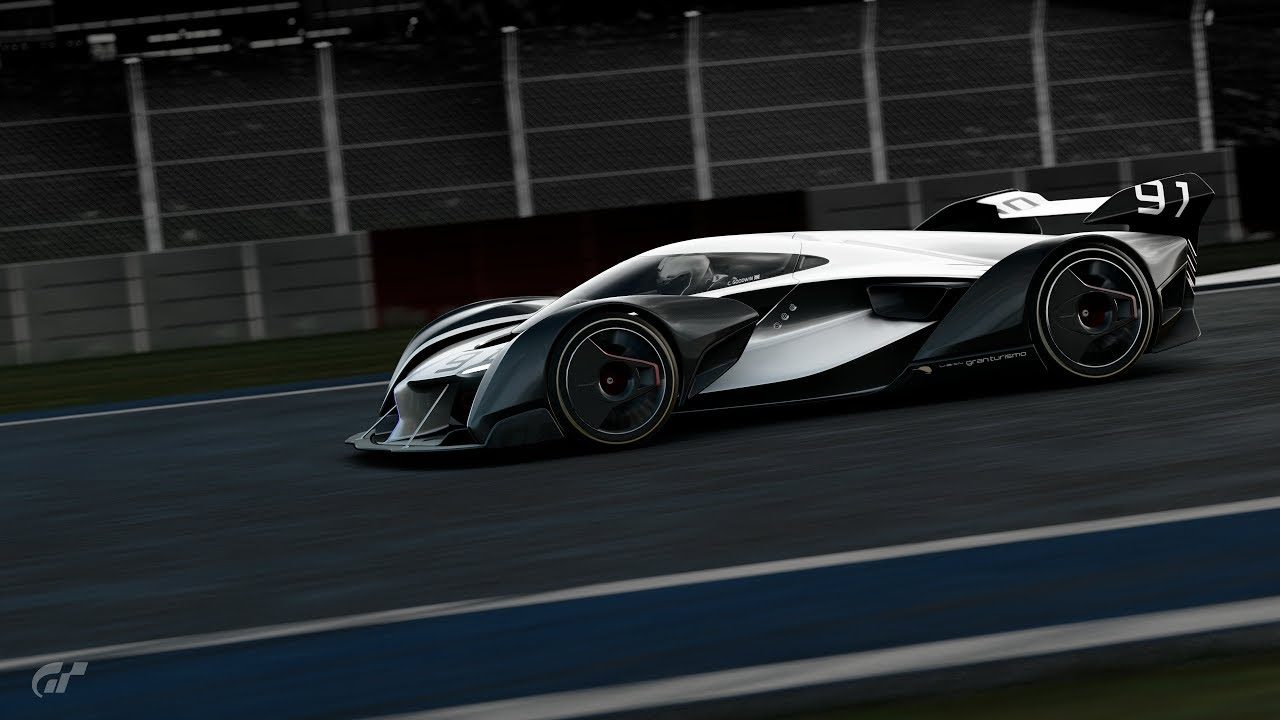You are using an out of date browser. It may not display this or other websites correctly.
You should upgrade or use an alternative browser.
You should upgrade or use an alternative browser.
Aston Martin & Red Bull Racing to build Valkyrie hypercar, due in 2019
- Thread starter CodeRedR51
- 305 comments
- 68,234 views
- 11,319

- Marin County
Most non-secured floor pavers are generally designed to withstand 20-30 PSF of uplift pressure. I'd imagine a manhole cover is about the same, but probably heavier. Assuming the car is fairly normal sized (120SFish plan-area), you would need about 3,600lbs of uplift force over the entire surface area to create enough localized force (30 PSF) to uplift the manhole cover.
- 22,549

- Arizona
- HamiltonMP427
I don't think a car can get more "bare bones" than that and be street legal. Looks aside, I want to see how this thing man handles the track into submission.
Only thing it could do more so bare bones, is come with a F1 road going engine. We know who is doing that though
 ?
?
Last edited:
- 24,608

- Anoka, MN
is come with a F1 road going engine. We know who is doing that though?
Going by recent news, Honda has been sneaking them into Accords for awhile now.

- 13,153

- GTPlanet
- Street-King-07
- Quattro Saltire
Early concept sketches of the Valkyrie AMR Pro.
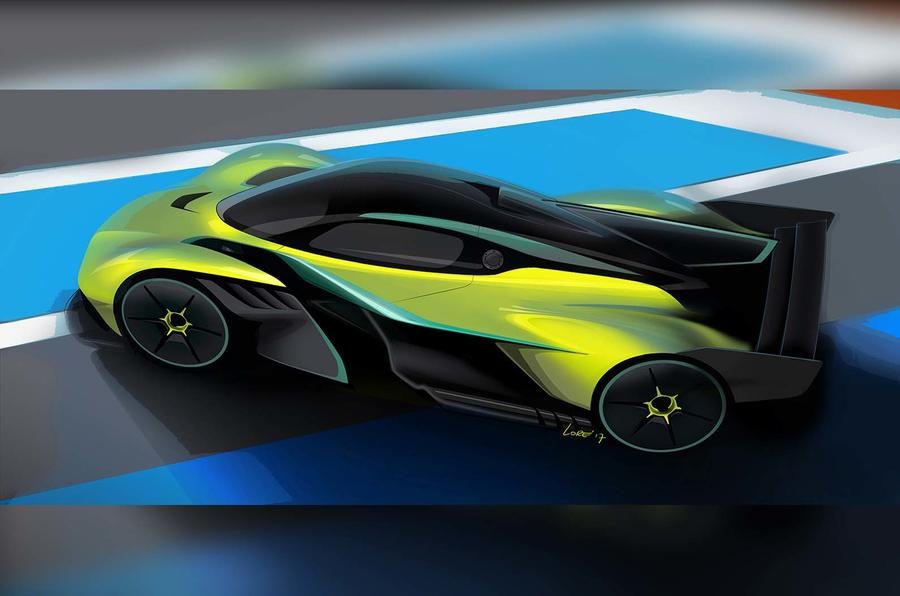

https://www.autocar.co.uk/car-news/new-cars/aston-martin-valkyrie-amr-pro-track-car-revealed
Expect more power, less weight and loads more downforce.


https://www.autocar.co.uk/car-news/new-cars/aston-martin-valkyrie-amr-pro-track-car-revealed
Expect more power, less weight and loads more downforce.
- 2,694

- BurnoutLogicville, USA
- INF_Mike458
Early concept sketches of the Valkyrie AMR Pro.


https://www.autocar.co.uk/car-news/new-cars/aston-martin-valkyrie-amr-pro-track-car-revealed
Expect more power, less weight and loads more downforce.
Beautiful. Truly beautiful.
- 2,949

- Nowhere
- TheSweeney_
Meh, not so sure, the "stock" Valkyrie looks far better judging by the sketches, more elegant. Otherwise I'm sure it'll be even more bonkers than the usual Valkyrie, with a projected increase in power and down-force and decrease in weight  .
.
 .
.- 48,782

- Australia
Aston Martin Valkyrie Pro9better graphics?  ) Sold out.
) Sold out.
 ) Sold out.
) Sold out.GTPNewsWire
Contributing Writer
- 20,198

- GTPHQ
This is the discussion thread for a recent post on GTPlanet:
This article was published by Kyle Patrick (@SlipZtrEm) on March 6th, 2018 in the Automotive News category.
- 1,531

- New Zealand
- nux-customz
Now this I approve of. That colour scheme is perfect!
I hated the road version because the headlight design didn't match the overall aesthetic of the car (it looked out of place).
I hated the road version because the headlight design didn't match the overall aesthetic of the car (it looked out of place).
- 521

- Russian Federation
- S15Fox

When that color scheme was shown on the new AMR Vantage, not many people were fond of it...That colour scheme is perfect!
I myself prefer the version from concept sketches, with the cyan accents instead of red ones.
- 3,770

- Brisbane, Australia
- Chameleon9000
I actually really like both versions. This is probably the car i am most excited about for the next few years hahaNow this I approve of. That colour scheme is perfect!
I hated the road version because the headlight design didn't match the overall aesthetic of the car (it looked out of place).
- 1,970

- United Kingdom
Taking the colour scheme out of the equation, and perhaps ignoring the headlights, this car is probably one of the most incredible pieces of automotive sculpture that I have ever laid eyes upon.
It's very much the Red Bull X1 made real, minus the Brabham BT46B-style ground effect technology. Cannot wait to see it in action, and hear that V12 sing/scream.
It's very much the Red Bull X1 made real, minus the Brabham BT46B-style ground effect technology. Cannot wait to see it in action, and hear that V12 sing/scream.

- 1,531

- New Zealand
- nux-customz
I didn't even see the render above. The cyan accents does look better.When that color scheme was shown on the new AMR Vantage, not many people were fond of it...
I myself prefer the version from concept sketches, with the cyan accents instead of red ones.
- 16,736

- Southampton, UK
- Pebb--
- Pebb
Source: AutoCar || Aston Martin Valkyrie to use more advanced materials than F1
Aston Martin's Adrian Newey-inspired hypercar, the Valkyrie, is so extreme that it features materials and parts not even Red Bull Racing, which is co-developing the car, uses on its Formula 1 racers. Autocar has learned that, with no regulations to restrict development, several components and materials used on the £2.5 million hypercar are of far higher performance than those used on the latest F1 cars. No expense has been spared as Aston's designers and engineers work to make the Valkyrie faster around a lap than exotic alternatives such as the Mercedes-AMG Project One, which also benefits from F1 tech. Designers at Aston’s top-secret design centre at Gaydon have now completed the Valkyrie's exterior shape, which is said to be focused on aerodynamics, with only small tweaks and adjustments made for aesthetic reasons.
Although the 1000bhp-plus two-seater's proportions have been known for many months, Newey, revered as the world’s greatest creator of F1 cars, has found further ways of increasing its aerodynamic downforce as his colleagues finessed details such as headlights, stoplights, scoops and badges.
"It's been a learning curve for both us and Red Bull Racing," said Libby Meigh, the Aston colour and materials manager for the Valkyrie project who was at last night's Autocar Awards. "For us, we've learned so much about performance, while Red Bull has had to learn about road laws and safety features."
Along with its road legality, the Valkyrie is going to need unprecedented levels of downforce if it is to fulfil Aston boss Andy Palmer's promise that it will “lap Silverstone as fast as an F1 car”. Sources at Gaydon have suggested the Valkyrie will generate up to 4000lb (1816kg) of downforce at top speed.
Autocar had exclusive access to a fully detailed, full-sized model of the Valkyrie, shown to a small group of customers at the Monaco Grand Prix last year. The car, pictured here, was used as a demonstrator for prospective owners keen to try the Valkyrie’s F1-style, raised-feet driving position and to begin deciding the specification of their cars. Meigh has met all of them, telling Autocar that buyers' tastes and specifications have varied dramatically.
Aston and Red Bull Racing expect to start making the planned run of 150 cars later this year, with a schedule to deliver the first Valkyries to customers during 2019. Jockeying for ownership has begun already; following advertisements purporting to offer Valkyrie build slots for sale, Palmer made clear that Aston would do whatever it could to resist premium market trading.
Aston’s designers and Red Bull Racing’s Newey have made considerable changes since the first iteration of the Valkyrie was unveiled at Aston’s HQ last year. The biggest alteration is a set of new openings between the cockpit and front wheel arches that are designed to increase downforce. Aston’s designers have had the unusual job of incorporating these slots harmoniously into the Valkyrie’s overall styling to ensure aesthetic quality as well as aerodynamic function.
“Much of what you see from outside is the actual structure of the car, which had to be signed off quite early," said chief designer Miles Nurnberger. "Non-structural areas were still subject to evolution as Adrian continued finding improvements.
“Ordinarily, the last thing we’d want is to cut a hole in one of our surfaces, but these new vents work the front wings so much harder that we’ve found a significant gain in front downforce. They have their own functional beauty, but we’ve finessed them without harming the way they work. They also work as windows through which owners can view our fabulous wing-section front wishbones.”
The extent to which the Valkyrie’s main proportions are shaped in the wind tunnel means it makes a complete break from supercars of the past. A low, two-seat, beetlebacked passenger pod with no rear window sits between two large, full-length venturi tunnels. They draw air from beneath the car to feed a very prominent rear diffuser. These tunnels are key to the car’s aero performance, said Aston design boss Marek Reichman, who has worked on this project side by side with Newey.
Despite their aerodynamic obsession, the Valkyrie’s creators are at pains to point out that this car is comfortable and surprisingly spacious, accommodating “a wide range of shapes and sizes”. Occupants must step over the lower aero structure to gain access through a pair of gullwing doors reminiscent of access to a Le Mans racer, but with larger openings.
“It has been a tremendous challenge making the interior packaging work,” said Aston designer Matt Hill. “We’ve embraced Red Bull’s F1 ethos and come at things from a different angle. We’ve started from a position that seemed impossible and found a way to make it work, fighting for millimetres everywhere.” The result is comfortable accommodation for two fairly large adults.
“The battle has been worth it,” Hill added. “It has been fantastic watching customers trying the car for size. They love the ritual of getting in and how it feels behind the wheel. They’re genuinely surprised at how the car seems to swallow them.”
Valkyrie owners will be able to have tailored seats made, if they desire, moulded directly to the car’s carbonfibre tub. Aston is pleased with early reactions to the race-style feet-up driving position, which creates a sense of occasion and allows occupants to be reclined further than normal to create head room. A four-point harness is standard.
The Valkyrie’s interior treatment reflects the keenness of Aston’s designers to reduce driver distractions. The traditional exterior mirrors are replaced by rear-facing left and right-hand cameras, whose reduced size also helps cut drag. The lack of a rear window means there’s no need for a central mirror. All important switchgear is on the steering wheel, which is almost rectangular in shape and has a screen on its central boss showing all vital information. There’s a supplementary central screen for minor functions, but ‘minimalist ergonomics’ is one of the design team’s main objectives.
The Valkyrie’s mechanical package has been decided and is proceeding to plan. The mid-engined car uses a normally aspirated 6.5-litre Cosworth V12, tipped to produce more than 900bhp, while the hybrid powertrain (conventional power is augmented by a kinetic energy recovery system) is understood to have delivered 1130bhp during testing. That means Newey’s oft-stated power-to-weight target of one horsepower per kilogram should be comfortably reached, given that the weight is just over 1000kg ready to drive.
The V12’s power reaches the centre-lock magnesium wheels through a seven-speed paddle-operated gearbox made by Ricardo (which also builds Bugatti’s gearboxes and McLaren’s engines). It exhausts through the upper body, Le Mans-style.
Aston says there will be distinct race and roads versions of the Valkyrie, linked by their styling but with “big differences” in weight and aero downforce. Both will use a bespoke central carbonfibre tub built by Multimatic, which also builds the structure for the latest Ford GT.
Little is known of the suspension design so far, except that it uses long, race-style wishbones at both ends. The obvious challenge is to create a system that can withstand huge downforce at top speed yet provide acceptable low-speed, road car comfort. “We want this car to be pure, simple and light,” Newey told Autocar. “It needs to major on comfort as well as performance.” This may be proving Newey’s biggest challenge so far.
Aston Martin's Andy Palmer: it's a landmark car
Signing off the Valkyrie for production represented “a huge milestone”, according to Palmer, who described managing the expectations of Newey, Reichman and production boss David King last year as the “toughest but best challenge to have”.
Palmer said: “The challenge has been working with three very strong-willed people with three very different agendas. Fighting one corner is Adrian, who wants a no-compromise performance car that sets new technical standards. Then there’s Marek, who is responsible for ensuring every Aston is as beautiful as it can be — something he’s not used to compromising on. And then there’s David, who has to make it, to a schedule, to a budget and so on. He has immovable deadlines that the other two constantly try to push.
“At times, it has been interesting. They have all pushed each other so hard. But it’s challenges like these that get you out of bed in the morning.”
Despite the base car costing around £2.5m, with 150 road and 25 track versions being built, Palmer said the project is unlikely to make money. “We’ll be lucky if this project washes its face, but that’s not why we do it,” he said. “This is the 1977 Vantage V8 all over again — a landmark car that gives you the poster-on-the-wall effect. Kids will fall in love with it. Dads will talk about it. It’s a symbolic car.
“Aston Martin is achieving so much and this is the best symbol of all that. We are getting our confidence back — even some swagger, but never arrogance — and what better way to express that confidence than in the Valkyrie.”
Aston Martin's Adrian Newey-inspired hypercar, the Valkyrie, is so extreme that it features materials and parts not even Red Bull Racing, which is co-developing the car, uses on its Formula 1 racers. Autocar has learned that, with no regulations to restrict development, several components and materials used on the £2.5 million hypercar are of far higher performance than those used on the latest F1 cars. No expense has been spared as Aston's designers and engineers work to make the Valkyrie faster around a lap than exotic alternatives such as the Mercedes-AMG Project One, which also benefits from F1 tech. Designers at Aston’s top-secret design centre at Gaydon have now completed the Valkyrie's exterior shape, which is said to be focused on aerodynamics, with only small tweaks and adjustments made for aesthetic reasons.
Although the 1000bhp-plus two-seater's proportions have been known for many months, Newey, revered as the world’s greatest creator of F1 cars, has found further ways of increasing its aerodynamic downforce as his colleagues finessed details such as headlights, stoplights, scoops and badges.
"It's been a learning curve for both us and Red Bull Racing," said Libby Meigh, the Aston colour and materials manager for the Valkyrie project who was at last night's Autocar Awards. "For us, we've learned so much about performance, while Red Bull has had to learn about road laws and safety features."
Along with its road legality, the Valkyrie is going to need unprecedented levels of downforce if it is to fulfil Aston boss Andy Palmer's promise that it will “lap Silverstone as fast as an F1 car”. Sources at Gaydon have suggested the Valkyrie will generate up to 4000lb (1816kg) of downforce at top speed.
Autocar had exclusive access to a fully detailed, full-sized model of the Valkyrie, shown to a small group of customers at the Monaco Grand Prix last year. The car, pictured here, was used as a demonstrator for prospective owners keen to try the Valkyrie’s F1-style, raised-feet driving position and to begin deciding the specification of their cars. Meigh has met all of them, telling Autocar that buyers' tastes and specifications have varied dramatically.
Aston and Red Bull Racing expect to start making the planned run of 150 cars later this year, with a schedule to deliver the first Valkyries to customers during 2019. Jockeying for ownership has begun already; following advertisements purporting to offer Valkyrie build slots for sale, Palmer made clear that Aston would do whatever it could to resist premium market trading.
Aston’s designers and Red Bull Racing’s Newey have made considerable changes since the first iteration of the Valkyrie was unveiled at Aston’s HQ last year. The biggest alteration is a set of new openings between the cockpit and front wheel arches that are designed to increase downforce. Aston’s designers have had the unusual job of incorporating these slots harmoniously into the Valkyrie’s overall styling to ensure aesthetic quality as well as aerodynamic function.
“Much of what you see from outside is the actual structure of the car, which had to be signed off quite early," said chief designer Miles Nurnberger. "Non-structural areas were still subject to evolution as Adrian continued finding improvements.
“Ordinarily, the last thing we’d want is to cut a hole in one of our surfaces, but these new vents work the front wings so much harder that we’ve found a significant gain in front downforce. They have their own functional beauty, but we’ve finessed them without harming the way they work. They also work as windows through which owners can view our fabulous wing-section front wishbones.”
The extent to which the Valkyrie’s main proportions are shaped in the wind tunnel means it makes a complete break from supercars of the past. A low, two-seat, beetlebacked passenger pod with no rear window sits between two large, full-length venturi tunnels. They draw air from beneath the car to feed a very prominent rear diffuser. These tunnels are key to the car’s aero performance, said Aston design boss Marek Reichman, who has worked on this project side by side with Newey.
Despite their aerodynamic obsession, the Valkyrie’s creators are at pains to point out that this car is comfortable and surprisingly spacious, accommodating “a wide range of shapes and sizes”. Occupants must step over the lower aero structure to gain access through a pair of gullwing doors reminiscent of access to a Le Mans racer, but with larger openings.
“It has been a tremendous challenge making the interior packaging work,” said Aston designer Matt Hill. “We’ve embraced Red Bull’s F1 ethos and come at things from a different angle. We’ve started from a position that seemed impossible and found a way to make it work, fighting for millimetres everywhere.” The result is comfortable accommodation for two fairly large adults.
“The battle has been worth it,” Hill added. “It has been fantastic watching customers trying the car for size. They love the ritual of getting in and how it feels behind the wheel. They’re genuinely surprised at how the car seems to swallow them.”
Valkyrie owners will be able to have tailored seats made, if they desire, moulded directly to the car’s carbonfibre tub. Aston is pleased with early reactions to the race-style feet-up driving position, which creates a sense of occasion and allows occupants to be reclined further than normal to create head room. A four-point harness is standard.
The Valkyrie’s interior treatment reflects the keenness of Aston’s designers to reduce driver distractions. The traditional exterior mirrors are replaced by rear-facing left and right-hand cameras, whose reduced size also helps cut drag. The lack of a rear window means there’s no need for a central mirror. All important switchgear is on the steering wheel, which is almost rectangular in shape and has a screen on its central boss showing all vital information. There’s a supplementary central screen for minor functions, but ‘minimalist ergonomics’ is one of the design team’s main objectives.
The Valkyrie’s mechanical package has been decided and is proceeding to plan. The mid-engined car uses a normally aspirated 6.5-litre Cosworth V12, tipped to produce more than 900bhp, while the hybrid powertrain (conventional power is augmented by a kinetic energy recovery system) is understood to have delivered 1130bhp during testing. That means Newey’s oft-stated power-to-weight target of one horsepower per kilogram should be comfortably reached, given that the weight is just over 1000kg ready to drive.
The V12’s power reaches the centre-lock magnesium wheels through a seven-speed paddle-operated gearbox made by Ricardo (which also builds Bugatti’s gearboxes and McLaren’s engines). It exhausts through the upper body, Le Mans-style.
Aston says there will be distinct race and roads versions of the Valkyrie, linked by their styling but with “big differences” in weight and aero downforce. Both will use a bespoke central carbonfibre tub built by Multimatic, which also builds the structure for the latest Ford GT.
Little is known of the suspension design so far, except that it uses long, race-style wishbones at both ends. The obvious challenge is to create a system that can withstand huge downforce at top speed yet provide acceptable low-speed, road car comfort. “We want this car to be pure, simple and light,” Newey told Autocar. “It needs to major on comfort as well as performance.” This may be proving Newey’s biggest challenge so far.
Aston Martin's Andy Palmer: it's a landmark car
Signing off the Valkyrie for production represented “a huge milestone”, according to Palmer, who described managing the expectations of Newey, Reichman and production boss David King last year as the “toughest but best challenge to have”.
Palmer said: “The challenge has been working with three very strong-willed people with three very different agendas. Fighting one corner is Adrian, who wants a no-compromise performance car that sets new technical standards. Then there’s Marek, who is responsible for ensuring every Aston is as beautiful as it can be — something he’s not used to compromising on. And then there’s David, who has to make it, to a schedule, to a budget and so on. He has immovable deadlines that the other two constantly try to push.
“At times, it has been interesting. They have all pushed each other so hard. But it’s challenges like these that get you out of bed in the morning.”
Despite the base car costing around £2.5m, with 150 road and 25 track versions being built, Palmer said the project is unlikely to make money. “We’ll be lucky if this project washes its face, but that’s not why we do it,” he said. “This is the 1977 Vantage V8 all over again — a landmark car that gives you the poster-on-the-wall effect. Kids will fall in love with it. Dads will talk about it. It’s a symbolic car.
“Aston Martin is achieving so much and this is the best symbol of all that. We are getting our confidence back — even some swagger, but never arrogance — and what better way to express that confidence than in the Valkyrie.”
Robin
Premium
- 16,799

- United Kingdom
Personally I'm so disappointed in this style wise, like most of a hypercars that are emerging at the moment they look nothing like the companies, or rather the companies design language, they come from. Instead they look like pie in the sky Vision GT style cars that could be made by anyone. The new AMG Project One is another example.
Remember when hyper cars actually looked like the company they came from... anyone could tell you this is a Mercedes, nearly no one could tell you that is an Aston Martin.
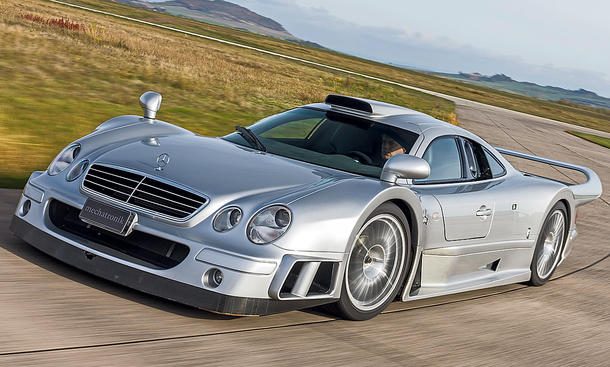
Remember when hyper cars actually looked like the company they came from... anyone could tell you this is a Mercedes, nearly no one could tell you that is an Aston Martin.

- 22,549

- Arizona
- HamiltonMP427
Personally I'm so disappointed in this style wise, like most of a hypercars that are emerging at the moment they look nothing like the companies, or rather the companies design language, they come from. Instead they look like pie in the sky Vision GT style cars that could be made by anyone. The new AMG Project One is another example.
Remember when hyper cars actually looked like the company they came from... anyone could tell you this is a Mercedes, nearly no one could tell you that is an Aston Martin.,

I mean probably because of the emblem. Considering the other cars of the same time as the one in the image above, if it didn't have the emblem and grill, no one would know the wiser.
GT One looked nothing like that from Toyota. Porsche 911 GT1. Nissan 390. Dauer 962 le mans and so on.
- 16,736

- Southampton, UK
- Pebb--
- Pebb
After reading this I wonder if the Valkyrie is using carbon nanotube fibres in some way.
Robin
Premium
- 16,799

- United Kingdom
I mean probably because of the emblem. Considering the other cars of the same time as the one in the image above, if it didn't have the emblem and grill, no one would know the wiser.
GT One looked nothing like that from Toyota. Porsche 911 GT1. Nissan 390. Dauer 962 le mans and so on.
I agree about the GT One but I think the 911 GT1 and Nissan 390 do look bare a resemblance because of the light shapes. It's not just the badge and grille, also the general shapes in the bodywork and other elements. Even if you stuck an Aston Martin badge on this car it still wouldn't be instantly recognizable as a Aston. It's a bit too alien to compared to the rest of the range.
If you look at cars like the Jaguar XJ220, Lamborghini Diablo SV, Lotus Esprit GT, Dodge Viper GTS, Honda NSX, TVR Speed 12, BMW M1, Maserati MC12 and quite a few other halo models from the 80's, 90's and 00's they look similar to the other stuff from those marques at the time. As a halo car it's supposed to bare some sort of resemblance to the brand because its trying to sell those other cars!
- 22,549

- Arizona
- HamiltonMP427
I agree about the GT One but I think the 911 GT1 and Nissan 390 do look bare a resemblance because of the light shapes. It's not just the badge and grille, also the general shapes in the bodywork and other elements. Even if you stuck an Aston Martin badge on this car it still wouldn't be instantly recognizable as a Aston. It's a bit too alien to compared to the rest of the range.
Light design...wow cutting edge stuff that shows manufacture derivatives. Surely you can't show me what the 390 looks close to as well as the 911 GT1. I think you simply too the one car that actually did a good job of it (CLK/CLR)
R390, in this promo shot surely looks like birds of a feather flocking together /s
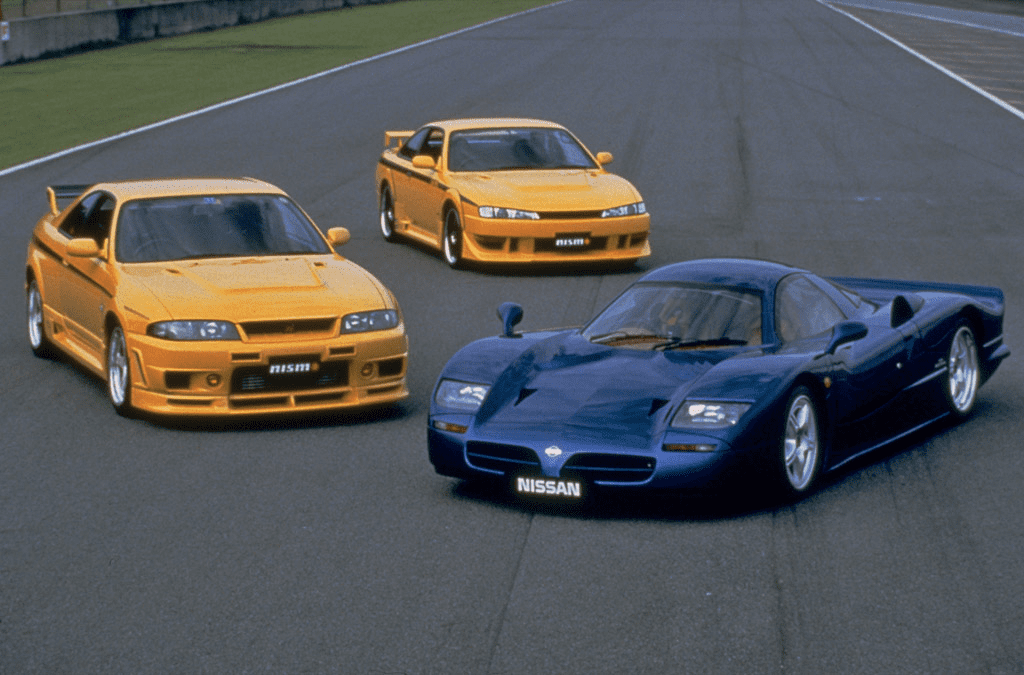
Porsche 911 GT1 I would say is a bit more similar just didn't have anything related to the 911 other than perhaps headlights. Well until the Evo which was more so what the GT1 ended up being based on rather than the original 96 car.
The Lotus is another example of this, so is the MR2 of the era. Though at least the GT1 Elise actually had headlights like the Elise as well as other front end traits.
If you look at cars like the Jaguar XJ220, Lamborghini Diablo SV, Lotus Esprit GT, Dodge Viper GTS, Honda NSX, TVR Speed 12, BMW M1, Maserati MC12 and quite a few other halo models from the 80's, 90's and 00's they look similar to the other stuff from those marques at the time. As a halo car it's supposed to bare some sort of resemblance to the brand because its trying to sell those other cars!
First in what world is there an unwritten rule that Halo cars should look like the rest of their design line up? The Jag didn't look like anything from the time maybe if you squint the XJS. Why does the Ford GT not look similar to a Focus, Fusion or F150? Hell the Viper did not look like any Dodge/Chrysler when it came out. If anything it being brought about set the tone for Chrysler design traits after. Remember that car was started in the late 80s and made production by 91/92.
Though I wouldn't call any of the above "hyper" cars, other than the Speed 12 and XJ220. MC12 would qualify too but again like the XJ220 what car from the current line up looks like it? I think this one most of all you'd have a hard time placing since the car the MC12 is based on wasn't even Maserati derived to begin with. Diablo if I recall was the only thing in the line up at that time and for quite some time until they were taken over by VW. Kind of hard to look like other cars when you're the only one that can barely be afforded to be built.
When I look at the new Aston at least I see carry over from the DB11 to the Vulcan to this, where it just shows them getting more and more extreme with each car.
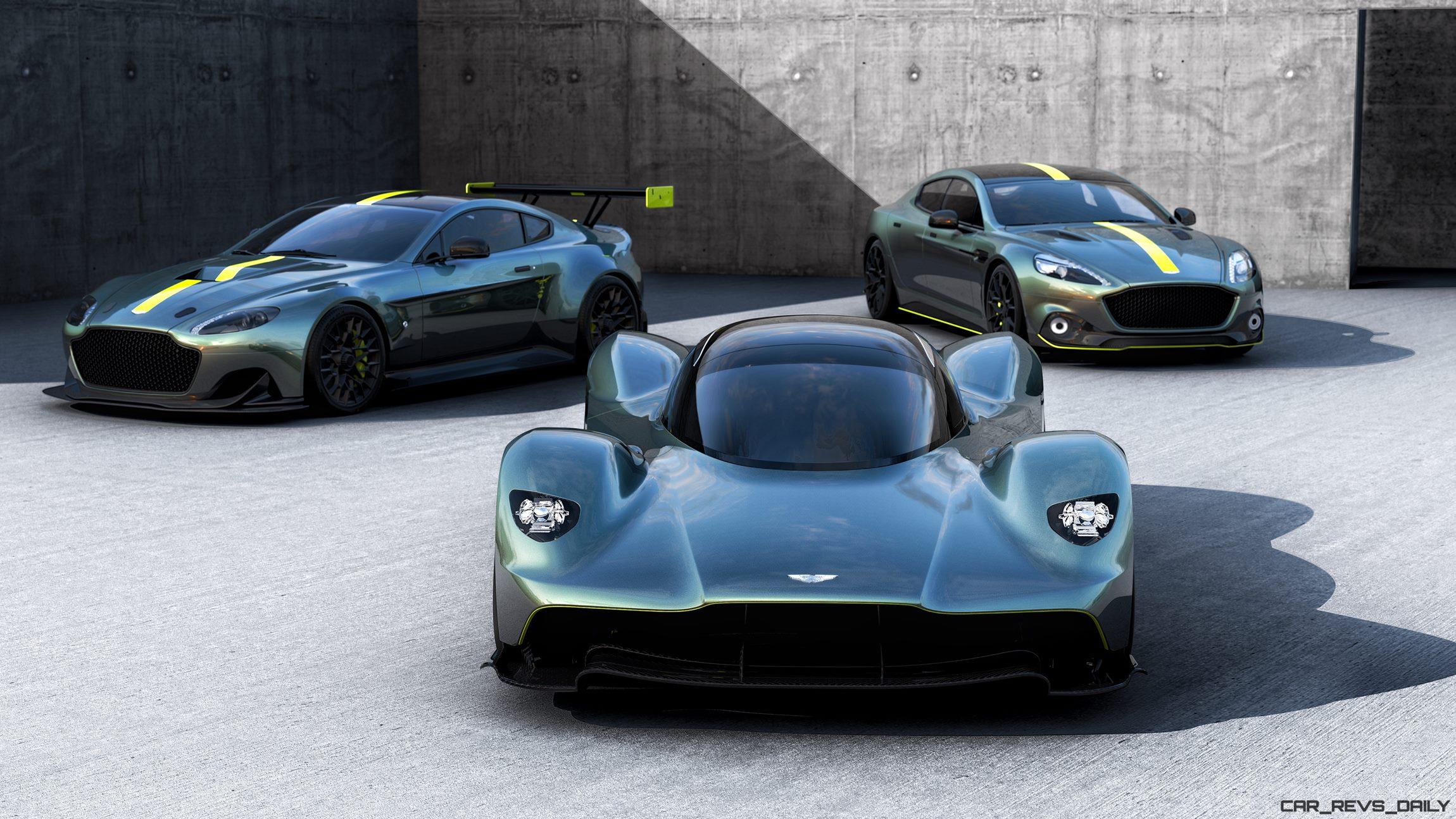
To me they actually are trying to maintain some design traits, while making a car of this caliber.
Last edited:
Robin
Premium
- 16,799

- United Kingdom
Light design...wow cutting edge stuff that shows manufacture derivatives. Surely you can't show me what the 390 looks close to as well as the 911 GT1. I think you simply too the one car that actually did a good job of it (CLK/CLR)
I couldn't care less about it being cutting edge if it doesn't tell which brand is being cutting edge. As if lights don't matter! It's probably the first thing that always draws me to a car because it's the element that frames the entire thing.
R390, in this promo shot surely looks like birds of a feather flocking together /s
We will have to agree to disagree on this one because I think it totally has a 90's Nissan thing going on. It actually has a resemblance to the 300ZX (Z32) from the front.
First in what world is there an unwritten rule that Halo cars should look like the rest of their design line up? The Jag didn't look like anything from the time maybe if you squint the XJS. Why does the Ford GT not look similar to a Focus, Fusion or F150? Hell the Viper did not look like any Dodge/Chrysler when it came out. If anything it being brought about set the tone for Chrysler design traits after. Remember that car was started in the late 80s and made production by 91/92.
I never said it was an absolute rule but in the old days it did tend to be about giving the brand an aspirational figurehead to sell more of its normal range, the stuff people could actually afford. Maybe nowadays a halo car is about making something totally bonkers to sell to rich Sheiks for any price and to hell with everything else, I dunno.
The 2004 Ford GT totally shared the New Edge design language with the rest of the Ford Range, the new one doesn't which is my point. The XJ220 looked like it came from the same language as the XJS. I think you are thinking about similarity too literally, it's doesn't have to look exactly like the rest of a range, hell, even the range doesn't necessarily look identical to each other... it can however share a common design language.
Though I wouldn't call any of the above "hyper" cars, other than the Speed 12 and XJ220. MC12 would qualify too but again like the XJ220 what car from the current line up looks like it? I think this one most of all you'd have a hard time placing since the car the MC12 is based on wasn't even Maserati derived to begin with.
Back then there wasn't really a hypercar category, there were just supercars which covered a broad group of halo models. The terminology isn't really relevant to this discussion anyway because we are talking about a manufactures best showcase model (whatever it may be) looking like the other stuff it makes. The M12 totally looked like the 3200 GT/ Coupe and 5 gen Quattroporte, there is no way you couldn't see they were all from the same company.
Apart from the ever so slight kink on the lip of the grille I don't see much Aston in there.
Last edited:
- 22,549

- Arizona
- HamiltonMP427
I couldn't care less about it being cutting edge if it doesn't tell which brand is being cutting edge. As if lights don't matter! It's probably the first thing that always draws me to a car because it's the element that frames the entire thing.
I see badges on them so, you know who it is.
We will have to agree to disagree on this one because I think it totally has a 90's Nissan thing going on. It actually has a resemblance to the 300ZX (Z32) from the front.
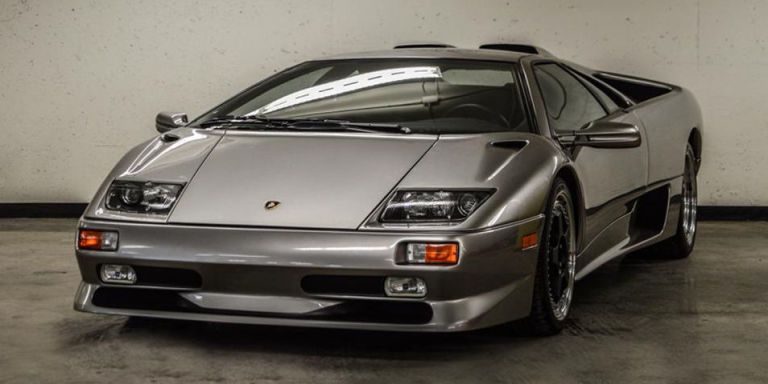
I guess this is a Nissan since you know same headlights as 300 ZX. I don't see where in that image you see a Nissan design traits of the time with in the R390 other than shared headlights which is a common trade done. The McLaren F1 used bus lights even...
I never said it was an absolute rule but in the old days it did tend to be about giving the brand an aspirational figurehead to sell more of its normal range, the stuff people could actually afford. Maybe nowadays a halo car is about making something totally bonkers to sell to rich Sheiks for any price and to hell with everything else, I dunno.
Yes but out of the several cars you decided to claim this with, to highlight "better times" only one of them really could be argued that, and that one is basically argued because TVR really didn't have much else to gleam from when making the oh so successful Speed 12.
The 2004 Ford GT totally shared the New Edge design language with the rest of the Ford Range, the new one doesn't which is my point. The XJ220 looked like it came from the same language as the XJS. I think you are thinking about similarity too literally, it's doesn't have to look exactly like the rest of a range, hell, even the range doesn't necessarily look identical to each other... it can however share a common design language.
AU Falcon got it!
Also I was talking more about the current GT but hey if you want to use that one that works too.
Back then there wasn't really a hypercar category, there were just supercars which covered a broad group of halo models. The terminology isn't really relevant to this discussion anyway because we are talking about a manufactures best showcase model (whatever it may be) looking like the other stuff it makes. The M12 totally looked like the 3200 GT/ Coupe and 5 gen Quattroporte, there is no way you couldn't see they were all from the same company.
Again post up comparitive images. I could see an argument for the Gransport if you try hard but nothing else from the range and again...the MC12 again was a Ferrari first and foremost. So why would a very well done rework look like other cars from its line up when it didn't start there?
Apart from the ever so slight kink on the lip of the grille I don't see much Aston in there.
other than the functioning front aero shaped purposely to have the same catfish "grill" opening. Which can be seen in the new Vantage. Other than that again, if you're expecting a high caliber hyper car to look very derivative of the GT cars...your going to be in for a very disappointing time.
Robin
Premium
- 16,799

- United Kingdom
I see badges on them so, you know who it is.
If you need badges then a manufacturer has fundamentally failed in trying to convey a brands design.
I guess this is a Nissan since you know same headlights as 300 ZX. I don't see where in that image you see a Nissan design traits of the time with in the R390 other than shared headlights which is a common trade done. The McLaren F1 used bus lights even...
It may share the lights but in what world is it a Nissan?! I didn't say Lights = Brand, its part of it and it can be a major element that frames the car but it is not a definitive factor in the overall styling of it. If they hadn't used Nissan lights but used other square lights that looked similar would you be making this point?
The Diablo looks like the car that came before it (the Countach) and the stuff after it. To Lamborghini's credit they have stuck to a certain design language for decades that is instantly recognisable. It did what it was supposed to do, sell a brand identity.
Also I was talking more about the current GT but hey if you want to use that one that works too.
RobinThe 2004 Ford GT totally shared the New Edge design language with the rest of the Ford Range, the new one doesn't which is my point.
Again post up comparitive images. I could see an argument for the Gransport if you try hard but nothing else from the range and again...the MC12 again was a Ferrari first and foremost. So why would a very well done rework look like other cars from its line up when it didn't start there?
It is a very well done rework because it DOES look like the other cars from it's lineup. It doesn't matter that its a Ferrari underneath because we are talking about how it looks, and it looks like a Maserati. You can Google the cars I mentioned, if you can't see a family resemblance then there's nothing more I can prove by posting them here.
if you're expecting a high caliber hyper car to look very derivative of the GT cars...your going to be in for a very disappointing time.
Then colour me disappointed. There is no reason why a hypercar has to look bonkers to be bonkers. I guess they want it like that and fair play to them but as I said in my original post it's not for me. I would prefer them to have some sort of production styling grounding.
- 16,431

- United Kingdom
The grille on the R390 is very 'bog-standard-Nissan'...
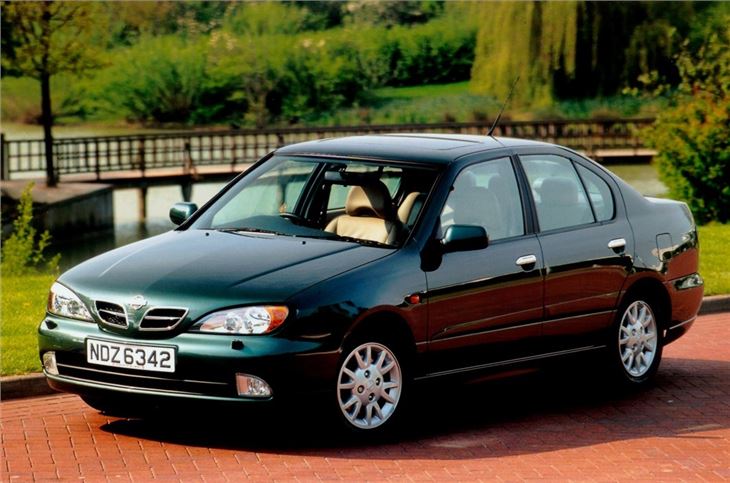
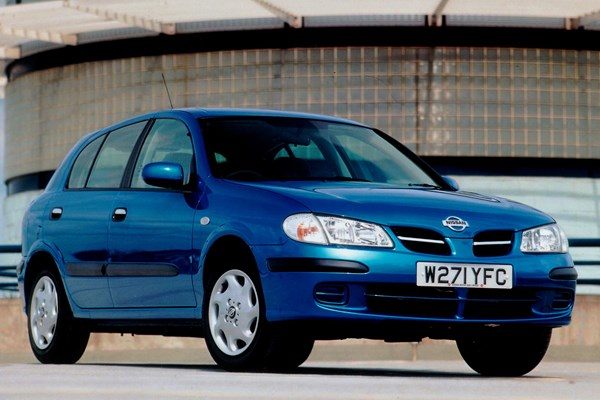
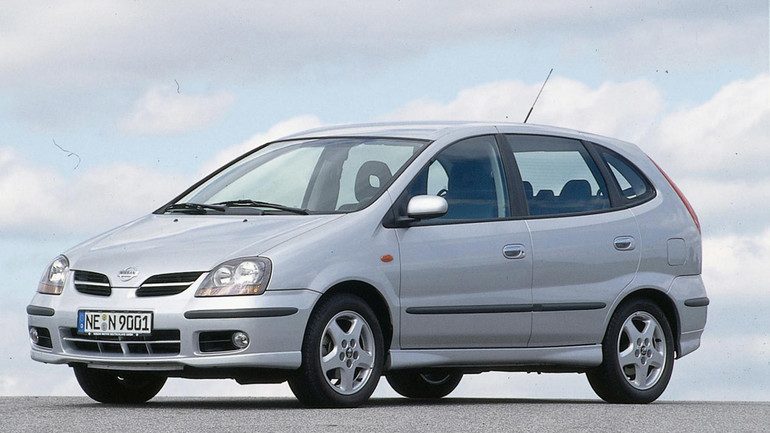


- 23,439

- It/It
- GTP_TheCracker
I don't see why this Aston has to look like any of their road cars as it isn't one. Ferrari or McLaren F1 cars don't look anything like their road cars and Porsche, Audi and Toyota's LMP1's don't resemble anything they sell for the road either. An ultra low production numbers dedicated track car has no reason to look like a road car, infact it would probably be detrimental to performance if it did. The GT1-spec Merc posted halfway up this page was a visual abomination due to them trying to make a sports-prototype look like a saloon car-based CLK Coupe.
- 22,549

- Arizona
- HamiltonMP427
If you need badges then a manufacturer has fundamentally failed in trying to convey a brands design.
Based on what? You used a list of car to demonstrate your point, at the end of the day your had one that actually was justified (two if you count the Merc this started with). And wish to cling to another that I wont ever agree with, the MC12. So really by that standard not many go above and beyond to try to influence a halo/hyper car with their lesser cars. If anything the halo car is what sets off a new design change. It could be argued the Vulcan and DB10 along with the Valkyrie are doing this for Aston currently.
It may share the lights but in what world is it a Nissan?! I didn't say Lights = Brand, its part of it and it can be a major element that frames the car but it is not a definitive factor in the overall styling of it. If they hadn't used Nissan lights but used other square lights that looked similar would you be making this point?
But you used it a few times as an example to say a certain halo car was quintessential and obviously the brand it was built under. You did it with the 911 GT1 and R390. So you can't have it both ways and cherry pick. A part that is off the shelf and can be molded to any brand, is hardly a very overall styling factor. I'd make this point either way, the light design wasn't unique to Nissan as demonstrated thus was hardly a way to claim the R390 looks the part.
It is a very well done rework because it DOES look like the other cars from it's lineup. It doesn't matter that its a Ferrari underneath because we are talking about how it looks, and it looks like a Maserati. You can Google the cars I mentioned, if you can't see a family resemblance then there's nothing more I can prove by posting them here.
Sure there is, I don't see it on my own. But if you point out stuff then perhaps you could change my original outlook. Also it does matter that it is Ferrari based. Because much of that carry over is seen at the end of the day, which makes it all the harder to see what other cars during that time were promoted by the Halo.
Then colour me disappointed. There is no reason why a hypercar has to look bonkers to be bonkers. I guess they want it like that and fair play to them but as I said in my original post it's not for me. I would prefer them to have some sort of production styling grounding.
Sure it does, that's how Aero works, you set a mission goal to be met, and what they are trying to achieve is of very high limits, and so the car ends up designed based on that. This is a standard concept in many areas of mass transfer, cars are no different. I'd say they still tried to look Aston, even with the sacrifices made.
The main point I took issue with in your original posting (to get back to the point). Was that there was some mythical time frame that halo cars were spiritual culminations of the brands they were built under, via design traits. Which is very far from reality, and in respect to those manufactures, the engineering and testing done is what should be respect, not "oh I totally see the 30k dollar car in the 230k dollar car" .
The second issue which seems to be more prominent as this argue has progressed, this idea halo cars should look like the brand. That there is or should be some unwritten rule about looking like the styling of the brands mass produced regular Joe drivers. Not only is that not true, nor necessary, it's unrealistic many times. And takes away from the purpose of the objective a manufacture may be trying to achieve. The GT-R for example was loved by many and still is, but didn't look like anything within the brand at that time. As the years went on the brand (as I've highlighted) changed to conform to that styling, not the other way around.
Also on the point of the Ford GT you talked of (2004), I saw that little tid bit you bolded in your last post the first time around. Which is why I said "AU Falcon got it". Because if you're trying to swing the idea that the Ford Gt was influenced by that styling, it wasn't. It's clearly and homage to the original Ford GT40, it's been said several times.
Clearly that went over. New Edge Design is gone, so my point on the current GT stands in relation to the rest of the brand.
Last edited:
- 15,313

- TRAPPIST-1g
- ProjectWHaT
Here's how the Valkyrie will sound like
Similar threads
- Replies
- 32
- Views
- 4K
- Replies
- 59
- Views
- 4K
- Replies
- 5
- Views
- 2K

